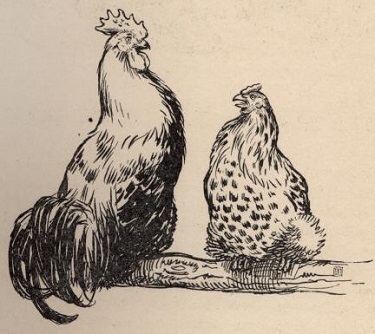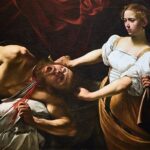
In both the Wife of Bath’s Prologue and the Nun’s Priest’s Tale from The Canterbury Tales, there are depictions of relationships in which the male character alludes to textual authority to bolster his position. However, in spite of the similarities between the two passages, there are acute differences in the way and intention that each character wields; these differences can shed light on the entire relationship of the characters and reflect on their spousal connection.
The Wife of Bath recounts how her fifth husband, Jankyn, used to read to her “nyght and day” from a book called “Valerie and Theofraste,” which is about famous “wikked wyves” from authoritative texts such as Eve, Deianira, Pasiphae and more; she then explains that Jankyn read this antagonizing book to her “[f]or his desport” (lines 675-770). Thus, it seems that Jankyn’s purposes of citing from his book to his wife were to upset, irritate and even abuse her, and probably also to demonstrate his sexist beliefs.
As opposed to the dysfunctional relationship of the Wife of Bath in which the husband cruelly employs textual authority to offend her and establish a misogynistic ideology, in the tale of the Nun’s Priest, Chauntcleer respectfully alludes to textual authority to rationally convince Pertelote of his opinion’s veracity. Chauntcleer addresses Pertelote with deep respect even after she reproaches him harshly for letting a dream affect him. He calls her “Madame,” then thanks her by stating “graunt mercy of youre loore” (line 204) and later on courteously refers to her as “Dame Pertelote” (line 356). Thereafter, Chauntcleer offers examples and cites from authoritative texts of Greek mythology and the Bible in order to exhibit how bad dreams can actually forebode real events, such as the stories of Daniel, Joseph, Cresus and Adromacha (lines 356-382).
While both Jankyn and Chauntcleer cite authoritative texts to support their position, their basic intentions and general approach are evidently at great variance.
The contrast in the relationships between that of the Wife of Bath and Jankyn, and that of Chauntcleer and Pertelote is perhaps most conspicuous in the aftermath of the aforementioned citations of textual authority. Since Jankyn “wolde nevere fyne” reading to the Wife of Bath from his book, she tears “thre leves” from the book and hits him “on the cheke”; in his turn, Jankyn strikes her “on the heed” and then she again hits “hym on the cheke” (lines 794-814). In contrast with this violent scene, after Chauntcleer finishes reciting to Pertelote, he compliments “the beautee of [her] face,” insinuates that she is his “joye and al his blis” and eventually “[h]e fethere[s] Pertelote twenty tyme” (lines 394-411).
The disparity in the final outcome is thus obvious and telling: Whereas the Wife of Bath and Jankyn brutally hit one another, Chauntcleer and Pertelote make love.
In the two segments from the Wife of Bath’s Prologue and the Nun’s Priest’s Tale, a male character uses textual authority to support his position. However, as illustrated, their purposes and manners portray a completely different picture of their relationship with the female characters: Jankyn divulges the disturbed relationship when he mistreats the Wife of Bath with the texts, while Chauntcleer reveals a loving connection with Pertelote when he kindly rationalizes his argument with the texts.



